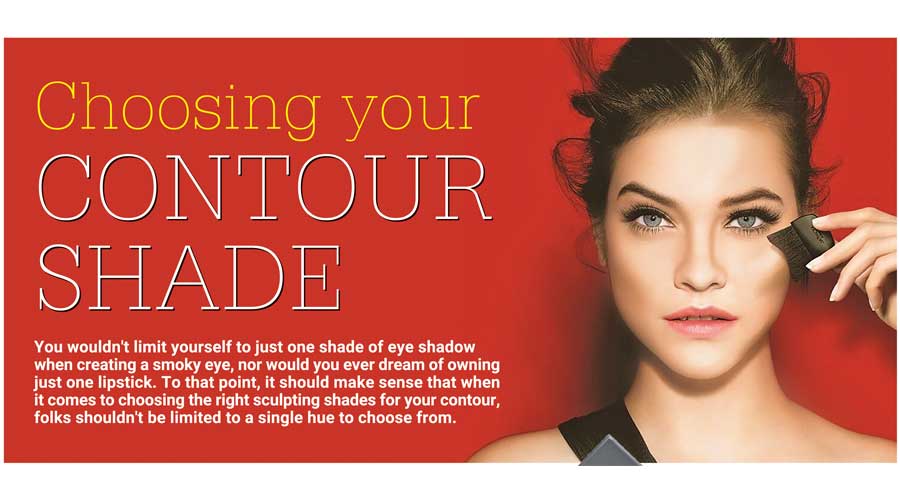12 Tips to Get Glowing Skin This Summer!
- 20 Apr - 26 Apr, 2024

For simple contouring, you only need one shade; but for more elaborate sculpting, you need two: A deeper shade to define the lines of the bone structure that you’re creating, and a lighter shade to create the shadow. When people hear the word 'contour' they instantly think of heavy Instagram-style makeup, but it’s supposed to be very subtle. Cream formulas are the best for this. Another secret for getting a "my cheekbones but better" result? Choosing the right hue. Ahead – our compiled list of tricks and techniques you can use to find the right contour shade.
First off, if you need a basic refresher course on contouring, you’ve come to the right place. To contour the face is to simply darken certain areas that you want to add more definition. The most common areas on the face to contour are your cheekbones, forehead, nose, jawline, even the chin. No matter your face shape, contouring is something you can utilise to enhance, define, or even recede your own facial features, yet it’s certainly not necessary to do every single day.
Paying attention to the colour of the shadows on your face is key when choosing the right contour shades to use, and we suggest using colours that mimic or closely resemble said shadows. Your foundation is a great place to start when beginning your contouring journey. Think the same tone family as your foundation, but one to two shades darker than your skin; that’s about as dark as you should go. Remember, you can always build a product to achieve the desired result. Adding a little at a time is great advice for those who need to start with a subtle contour and work their way up to something more definitive.
The undertones of our skin mean something when choosing the right contour shades, and since skin tones are widely varying and beautifully unique, it’s ideal to be familiar with your individual skin tone to then learn what contour shades suit you best. If you have fair to medium skin, think of neutrals, taupes, and contour shades that lean on the cooler side. For more tan/olive complexions, you can tend to go a little more golden, as these tones naturally have more warmth in the skin. For dark skin tones, stick with something more neutral that has the right balance of blue and red undertones.
No matter what makeup look you’re creating, using the right brushes and blending tools are important, as they can greatly enhance your look and help apply your products seamlessly. Brushes can play a huge role in how your contour looks, so there are a few things to keep in mind when utilising the right tools. We suggest fluffier brushes for a more natural look. Using a fluffy brush will keep the contour soft and diffused. For a more defined look, you’ll want to opt for a different brush: If you want a more sculpted look, reach for a smaller, denser brush. Starting slowly with contouring products is the best way to use them.
Because cream and powder are two very different textures, you will want to get familiar with each kind and see which one you prefer more for contouring. Powder contours can help with oilier skin types and give more of a matte finish, while creams can aid with drier skin types and give a more luminous finish.
You can even use your everyday bronzer to contour if you want to utilise what’s already in your makeup drawer and don’t feel the need to shop for anything new.
The most important tip? Have fun. There shouldn't be any pressure surrounding contouring, and the more you practice, the more you’ll find what works and doesn’t work for you. Experiment with different products, textures, and blending tools until you discover what suits you best, and you’ll become a contouring pro in no time at all.
COMMENTS